This post includes the best internal solid-state drives (SSDs) among those I've reviewed that you can safely bring home today.
Inside your computer (or game console), the main internal drive is one of the three most important components, besides RAM and CPU, that decides performance. That said, an SSD upgrade can be the most gratifying one—it never hurts to have more storage space, either. The lists below make the important task of picking the correct drive less daunting.
Dong's note: I first published this post on May 1, 2020, and last updated it on July 10, 2024.

Best SSDs: The lists
There are two lists: one for NVMe SSDs and the other for SATA drives. Nowadays, the former is more relevant to performance, while the latter is great for cases where you need a large amount of fast internal storage at an affordable cost.
NVMe and SATA are two different internal storage types—more about them in this post on SSD basics.
These lists are sorted in the recommendation order with the best on top—the numbers are the ranking.
Top five best NVMe SSDs (and alternatives): A must for a top-performing computer, server, or game console
Fast NVMe SSDs require a host with an M.2 slot. Most computers released in the past five years have at least one of these slots built-in, but you can upgrade to one on almost all desktop computers via a PCIe adapter.
The fastest NVMe drives currently use PCIe 5.0, which also requires the latest motherboard, CPU, and RAM to show their true potential. Alternatively, PCIe 4.0 and PCIe 3.0 counterparts are also viable in all cases. All PCIe NVMe SSDs can work with all PCIe motherboards, regardless of the revision, at the speed of the slower party.
Top 5 best NVMe SSDs
 | 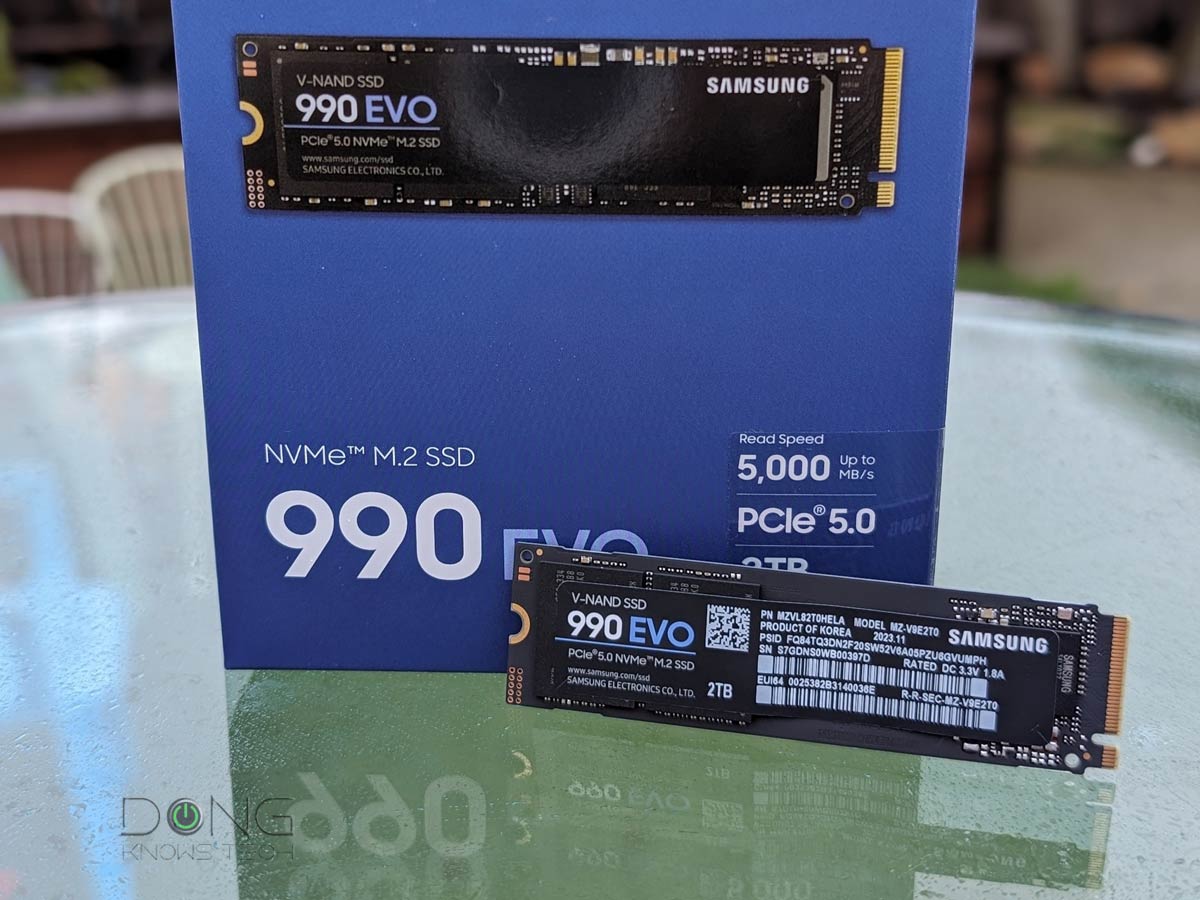 |  |  |  | |
| Name | Crucial T705 PCIe 5.0 SSD's Rating | Samsung 990 EVO SSD's Rating | WD Blue SN5000's Rating | Sabrent Rocket 4 Plus-G and Rocket 4 Plus' Rating | Seagate IronWolf 525's Rating |
| Price | - | - | - | - | - |
| Rating | |||||
| Description | |||||
| Statistics | |||||
| Buy this product |
1. Micron Crucial T705

The Crucial T705 is Micron's second PCIe SSD and is currently the fastest consumer-grade drive on the market. It's an excellent option for those with the latest hardware who want the absolute best performance.
Similar alternatives from Micron:
- Crucial T700
- Crucial T500
- Crucial P5 Plus
- Crucial P1
- Shopping link: Compare these drives on Amazon!
Crucial T705 PCIe 5.0 SSD's Rating

Pros
Stellar performance with PCIe 5.0 or 4.0, especially in raw data transfer
Helpful Storage Executive desktop dashboard software
5-year warranty
Cons
Expensive
Runs hot
2. Samsung SSD 990 EVO

The 990 EVO is Samsung's first PCIe 5.0 drive, and it's an interesting one. Unlike others, such as the Crucial counterparts above, it features only the 2-lane specs—it has half the bandwidth. As a result, it delivers the same performance as when using a 4-lane PCIe 4.0 drive. In return, it's more affordable and produces significantly less heat. And PCIe 4.0 performance is plenty fast.
Similar alternatives from Samsung:
- Samsung 990 PRO
- Samsung 980 PRO
- Samsung 980
- Samsung 970 PRO
- Samsung 970 EVO Plus
- Shopping links: Compare these drives on Amazon!
Samsung 990 EVO SSD's Rating

Pros
Excellent PCIe 4.0 performance with native PCIe 5.0 support
Produce little or no heat
Helpful Samsung Magician software with lots of useful settings and features
5-year warranty
Cons
Only two-lane bandwidth with PCIe 5.0
Comparatively slow copy speed when performing both writing and reading simultaneously
3. WD Blue SN5000

The WD SN5000 is Western Digital's latest PCIe 4.0 NVMe SSD in the WD Blue family, continuing the tradition of affordability. This frill-free drive offers an excellent combination of performance and cost.
Similar alternatives from WD:
- WD Blue SN580
- WD Black SN850
- WD Black SN850X
- WD Black SN770
- WD Blue SN570
- WD Blue SN550
- Shopping link: Compare these drives on Amazon!
WD Blue SN5000's Rating

Pros
Excellent sequential performance
Up to 4TB of storage, affordable; helpful Dashboard software
5-year warranty; run cool
Cons
Random access performance and the 4TB version's endurance rating could be better
No hardware encryption or user-accessible features
4. Sabrent Rocket 4 series

Sabrent's Rocket 4 series includes the Rocket 4 Plus and Rocket 4 Plus-G. Both are excellent SSDs.
Similar alternatives:
- Silicon Power XPower XS70
- Silicon-Power A80
- SK hynix Gold P31
- Shopping links: Compare these drives on Amazon!
Sabrent Rocket 4 Plus-G and Rocket 4 Plus' Rating
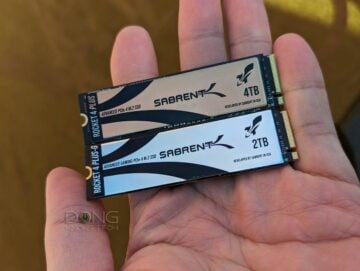
Pros
Excellent NVMe performance, Plus model available in up to 8TB, high endurance
Useful Dashboard software; valuable bundle backup software
Microsoft DirectStorage API support (Rocket 4 Plus-G model)
5-year warranty
Cons
Only a 2-year warranty without registration
No hardware encryption or user-accessible feature
5. Seagate IronWolf 525

The IronWolf 525 is an excellent PCIe 4.0 NVMe SSD with the best endurance rating for PCs and NAS servers.
Alternative:
- Seagate IronWolf 510
- Shopping link: Compare the two on Amazon!
Seagate IronWolf 525's Rating

Pros
High endurance
Excellent real-world performance and RAID support
Three years of data rescue services included
5-year warranty
Cons
Slower than PCIe 4.0 rivals
Limited NAS use
Top five best SATA SSDs (and alternatives): Slow but still plenty fast and relevant
The SATA standard is much slower than the NVMe above but still significantly faster than any traditional hard drive.
A SATA SSD will fit in the place of any regular hard drive and, therefore, will make an easy and satisfying upgrade in any computer that still runs on a hard drive—if you still have one today. On a fast, up-to-date computer, a SATA SSD makes an excellent secondary drive that holds data or backups.
Top 5 best SATA SSDs
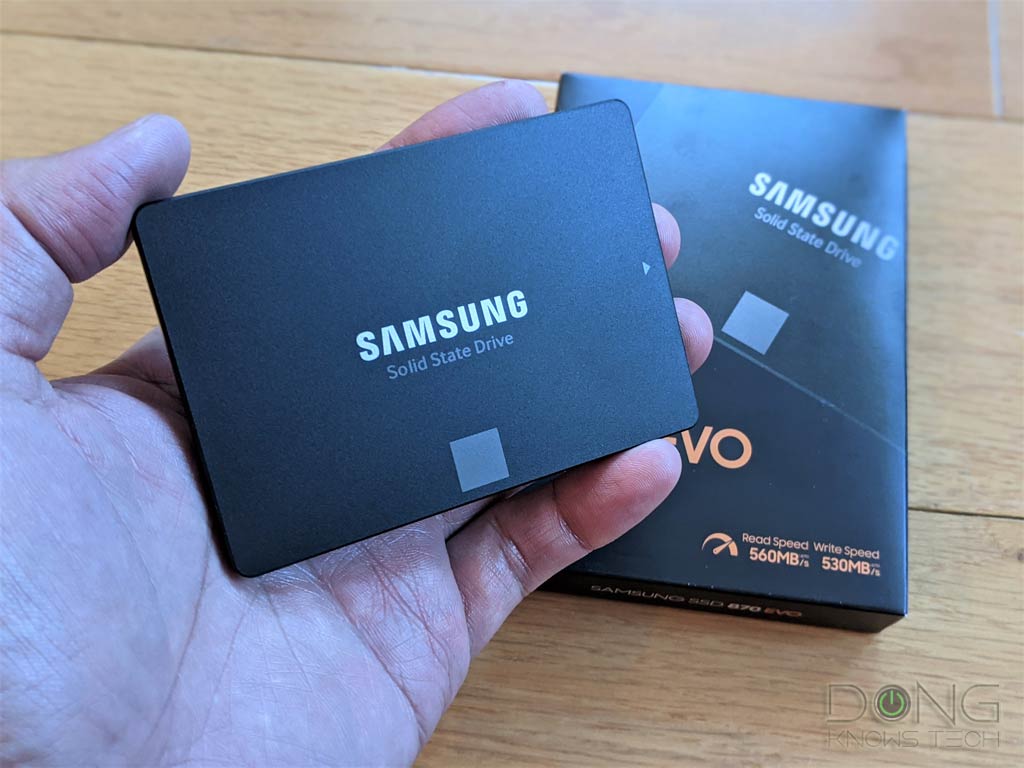 |  |  |  |  | |
| Name | Samsung 870 EVO's Rating | WD Red SA500's Rating | WD Blue's Rating | Crucial BX500's Rating | SanDisk SSD Plus's Rating |
| Price | - | - | - | - | - |
| Rating | |||||
| Description | |||||
| Statistics | |||||
| Buy this product |
1. Samsung SSD 870 EVO

The 870 EVO is Samsung's latest SATA SSD and might be the company's last drive of the standard.
Similar alternatives from Samsung:
- Samsung 870 QVO
- Samsung 860 EVO
- Samsung 860 QVO
- Shopping link: Compare these Samsung drives on Amazon!
Samsung 870 EVO's Rating

Pros
Top-notch SATA performance
Useful software with an excellent feature set
Relatively affordable
5-year warranty
High endurance
Cons
No 8TB capacity
No M.2 version
2. WD Red SA500

The WD RED SA500 is unique since it's available in M.2 and SATA form factors. It's an excellent choice for a NAS server or a budget PC.
WD Red SA500's Rating

Pros
Affordable with extended warranty
Excellent performance
2.5-inch and M.2 form factors
High capacity
Cons
Relatively low endurance when compared to competing drive
No NVMe version, 2.5-inch to 3.5-inch mounting bracket not included
3. Western Digital WD Blue
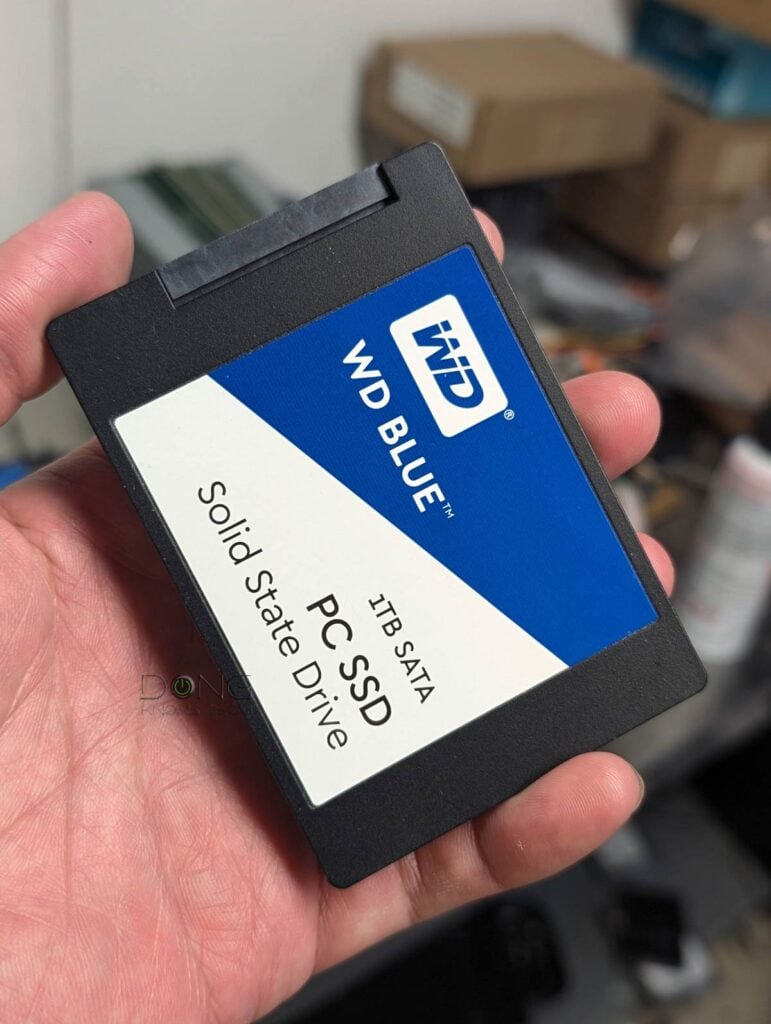
First available in 2016, the WD Blue has gone through a few hardware revisions. The latest model, WD Blue SA510, is available for 250GB and up to 4TB. Over the years, the drive has proven itself to be an excellent SSD.
WD Blue's Rating
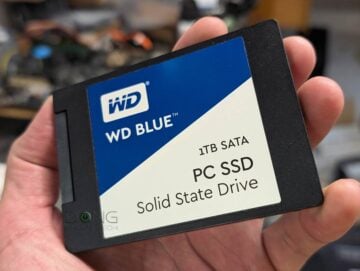
Pros
Excellent performance
Up to 4TB of storage, affordable; helpful bundled software
High endurance, reliable
Cons
A bit pricy
4. Micron Crucial BX500

The Crucial BX500 is a barebone SSD with relatively modest performance, but thanks to the friendly cost, it's still an excellent alternative to any hard drive.
Crucial BX500's Rating

Pros
Inexpensive
Good performance and endurance
Useful software and features
Cons
No encryption, bare-bone specs
The performance could use some improvement
5. SanDisk SSD Plus

First available one year after the WD Blue above, the SanDisk SSD Plus has been an excellent drive for those needing a good combo of fast SATA performance, reasonable cost, and excellent reliability.
SanDisk SSD Plus's Rating
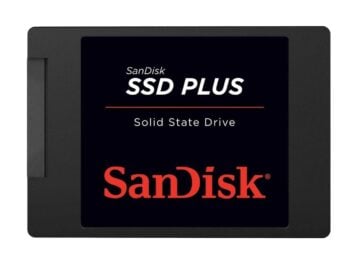
Pros
Good performance
Up to 2TB of storage; excellent dashboard software
High endurance and reliable
Cons
Inconsistent performance between hardware versions
Best SSDs: The takeaway
The solid-state drive has become the norm in computer storage. It's not impossible to buy a new computer that doesn't use one as the main storage unit.
Still, not all SSDs are created equal. Picking the right one will ring in the performance you need and the right bang for your buck.
Once you've got the one you need, these posts on how to migrate a hard drive to an SSD or perform an MVMe upgrade on your Windows machine will be helpful.
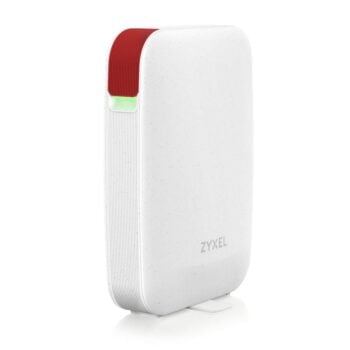





FWIW, Amazon sells a Crucial BX500 2TB 3D NAND SATA 2.5-Inch Internal SSD, up to 540MB/s – CT2000BX500SSD1, Solid State Hard Drive for $115. So there is a larger Crucial SSD.
👍
I am surprised there was no mention or inclusion of a single Sabrent-branded SSDs. I’ve been using a couple 2TBs for well over a year and no problems. I have an unopened 2TB NVMe v4.0 ready to deploy when I get my Lenovo X1 Extreme Gen 4. You might want to check them out. Here’s one link to a Black Friday special at Amazon.
https://www.amazon.com/dp/B07TLYWMY
Hi Dong,
My daughter has a ThinkPad X1 Carbon laptop. About a year ago, I upgraded its SSD from Intel Pro 6000p 256GB (SSDPEKKF256G7) to Samsung 970 EVO Plus 1TB (MZ-V7S1T0B/AM).
We found out that the 970 EVO Plus runs quite a bit hotter than the Intel Pro 6000p.
I think it might be useful to your readers, if you could include some temperature measurements, especially in ultra-portable laptops.
Thank you and Happy Thanksgiving!
When you need larger capacity drives, there is no competition for old mechanical hard drives. I would rather pay $200 for a 10TB mechanical drive than $1000+ for a SSD. Put 8 of them into a Synology DS1819+ and you really have a lot of $ put out in drives.
That’s true, Steve. These mostly are for the boot drive of a computer. You can use SSDs with a NAS though, you’ll be amazed how much faster your system is especially when you want to run VMs. More in this review of the DS1621+.
I know. I have an Alienware m17 r3 with 2x 2tb m.2 NVMe SSDs, and 1x 512GB m.2 NVMe SSD. On the 1819+. I have 8x 10tb HD (shucked WD EasyShares) and 2 Seagate Iron Wolf drives for caching
I’m impressed, Steve! On the shucked ones! It takes guts. 🙂
Not really. They are white label HGST drives. Most of the Seagate 10TB or larger are now IronWolf drives now. You have access to my email so if you want to email me, feel free.
Noted, Steve. Thanks. 🙂
Maybe this is insensitive (or plain ole back woods ignorance), but are spindle/platter drives still common in everyday computing? I purchase computers semi-regularly (I work in IT) and don’t think you can configure devices with anything but SSD for the primary (the Dell models we buy anyway).
I can’t even begin to fathom how long it must take for Windows 10 to do anything on a 7200RPM (or even 5400RPM, ouch!) drive.
There are still a lot of new (cheap) computers that use HDD on the inside, Lance. Not to mention existing old computers. But SSDs are taking over for sure. And you can also upgrade to a larger one.
consider ADATA XPG SX8100 512GB 3D NAND NVMe Gen3x4 PCIe M.2 2280 Solid State Drive R/W 3500/3000MB/s SSD (ASX8100NP-512GT-C)
I’ll check it out, Ron. Thanks for your suggestion.
Why no SanDisk SSD? Great budget SSD and good performance options. I have two 960GB Ultra IIs that are going strong 4-5 years now.
They haven’t made new ones for a long time, WP. The one you mentioned I reviewed in my past life at CNET, not on this site.
Please include WD SN850 NVMe Gen 4.0 drives as it narrowly beats Samsung 980 Pro while being little cheaper. It is also NVMe 1.4.
Noted, D. I’ll see to it. 🙂